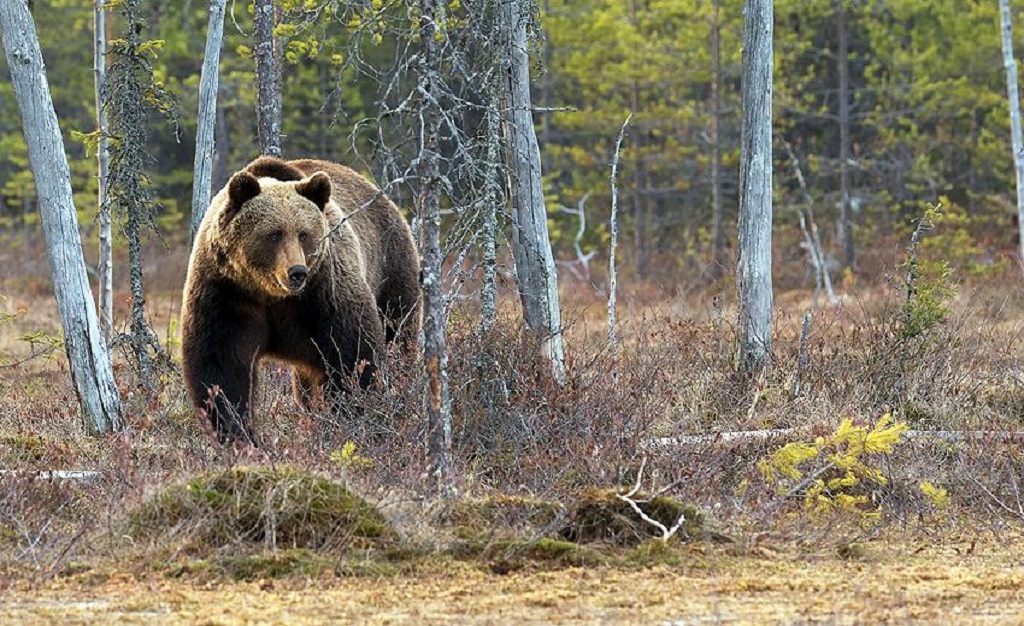By being patient and starting with the animals that are easier to see and recognize, you will become familiar and feel safer when you move around in nature.
Walking in nature to observe wildlife is an activity that is becoming increasingly popular. Having the opportunity to spend hours outdoors, thanks to trips and excursions, is an excellent way to reduce stress and regain peace of mind. Furthermore, you have the opportunity to live unique experiences and learn more about the environment that surrounds us.
However, observing wildlife can be tricky and even dangerous if you don’t know-how. For this reason, we have written an article that collects a series of tips that will allow you to approach animals, in their natural habitat, in a correct, conscientious, and completely safe way.
Is it the first time? Start with the birds
Many dream of seeing a large predator in the wild such as, for example, a wolf. However, these species are very shy and difficult to see, especially for newbies. On the contrary, birds are animals more approachable by people, due to the fact that, depending on the type, they like to visit the same places.
Even if there are very shy bird species, without going too far, it will be easy to see some of the birds living in your garden, for example. Like the robin (pictured below), which some of you will already have had the opportunity to appreciate, perhaps in countryside areas. Also, a good way to become a wildlife watcher is to learn how to identify them. Take pictures, take notes, and, little by little, you will be able to recognize their silhouette in flight or details related to color, beak, and claws.
Trust the official guides
One of the mistakes many make is believing that they will be able to see a lynx simply by spending an afternoon in the Gran Paradiso National Park. Given the growing popularity of this activity, there are more and more biologists and other professionals dedicated to guiding tourists to these places in search of the more elusive animals.
These guides are familiar with the habits of the local wildlife and are able to track them. They are also in constant communication with farmers and other wildlife watchers, so they are a guarantee of success for observing animals in the wild.
We are talking about the so-called responsible tourism which serves to promote the conservation of nature. And also to assess the health of endemic species, without having to be hunted.
Learn to walk in nature
It is impossible to observe wildlife if you walk into a forest or protected area like an elephant in a Chinese china shop. It is important not to make noise, to walk slowly trying to ensure that your steps are softened as much as possible, without breaking branches or kicking stones.
You will have to pay attention to any movement in the trees or vegetation. As you gain experience, you will begin to move with greater ease, choosing the best places to see the different wild animals that surround you.
Always carry binoculars
Normally, nature guides provide accessories and tools such as spotting scopes and high-quality binoculars. If you are new to it, you can borrow it when there is something interesting to see. On the contrary, if you are passionate about this activity, it is right to buy quality binoculars. It will allow you to choose the one you are best with and you can use it with greater freedom.
Another option is the use of digital cameras. Although not designed for this purpose, the latest generation ones have a very powerful zoom. They will allow you to take snapshots that you can then calmly identify. Moreover, compared to the old reflex cameras they do not make any noise.
Learn to identify animals
One of the funniest activities, especially for children, is learning how to identify various wildlife animals. Today there are books and guides, equipped with photos and color illustrations, which will help you to recognize the different members of the same species. Over time, you can surprise friends and relatives by recognizing animals with a simple glance.
Furthermore, if you have a modern smartphone, you can take advantage of the large Internet library and search, in real-time, for information and photos on different living beings. There are also applications to recognize animals, such as iNaturalist.
Pick the right time
It is important to know that it is not possible to see all species at the same time of the year. In general, sunset and sunrise are the best times to observe wildlife, as the forest is quieter and hikers push the animals into hiding during the day.
Climatic conditions are also important. For example, it will be nearly impossible to see bears in winter, since they will spend all their time hibernating. On the contrary, for example, autumn is the perfect time to spot deer in northern Italy or to contemplate the stages of their courtship. While it will be almost impossible to see the lesser kestrel, which is a migratory bird.
Pay attention to the information signs
In national parks and bird watchers, it is quite common to find information signs, which will tell you which species are most common at certain times of the year or where you can find them. Often, real itineraries are also indicated that, hopefully, will increase the chances of observing wild animals.
Don’t rush or be superficial. It is worth spending a few minutes reading. The people who created these information signs know the area best. You will find essential information about the success of your excursion.
Be patient
It is the best advice we can give you. It is practically impossible for you to go out into the fresh air tomorrow and suddenly observe a herd of wolves hunting a deer. However, with the right experience and consistency, you can become one with nature and enjoy this beautiful hobby more and more.
By being patient and starting with the animals that are easier to see and recognize, you will become familiar and feel safer when you move around in nature. Observing sparrows and robins will lead you little by little to follow more complex paths and recognize more fascinating species.

